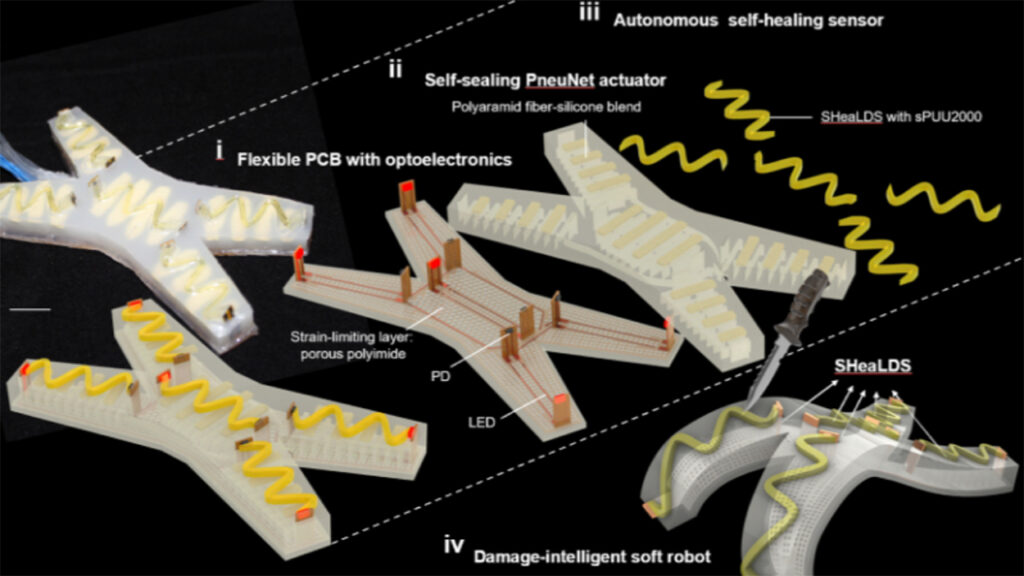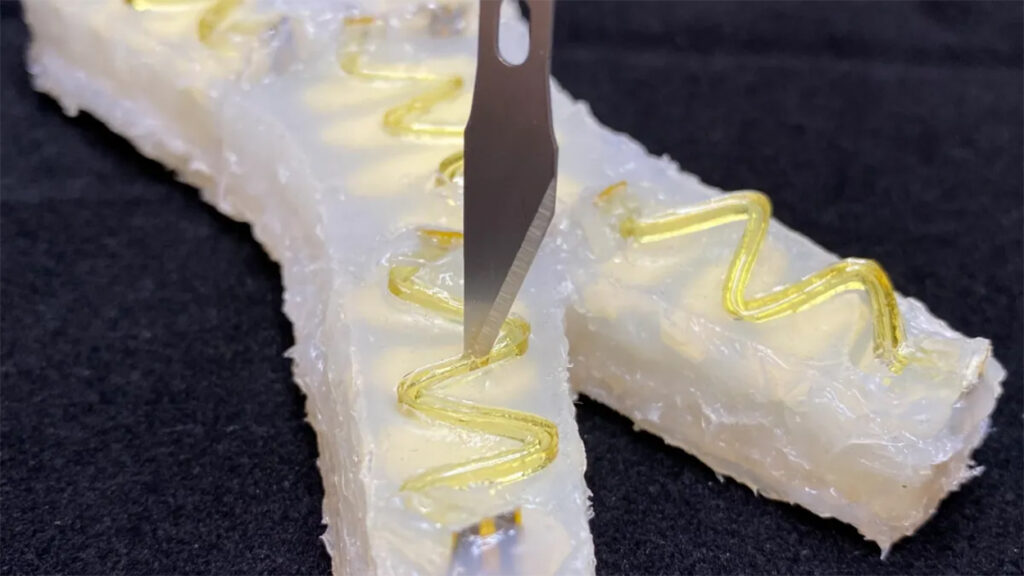Soft Robots Self-Heal After Detecting Injury or Damage

Over the years, robots appeared in different sizes and shapes. Some are firm and hard, with defined forms. But some are small and soft, like the soft robots created by engineers at Cornell University in Ithaca, New York. The soft robots they developed can change their structure. Moreover, the robots can heal themselves after injury or damage.
Robots that can identify the damage and repair it
Cornell University associate professor of mechanical and aerospace engineering Rob Shepherd leads the team. Their goal is to create a robot using a composite material capable of detecting damage through optical sensors. Combining the materials and the sensors allowed them to create self-healing soft robots.
According to the engineers, the soft robot can operate longer, despite being damaged. Dr. Shepherd said that when soft robots operate for long periods, they are prone to damage and want the robots to deal with the impairment.
They first need to let the robot acknowledge the injury, making it understand that it needs repair. The team used the stretchable fiber optic sensors developed by Dr. Shepherd in his Organics Robotics Lab.
Using fiber optics
The research team created a stretchable fiber optic sensor for their project. It combines dyes and low-cost LED lights to develop a stretchable skin or film capable of detecting strain, bending, or pressure. The sensor provides soft robotic systems (and augmented reality technology users) the capacity to feel the rich, tactile sensitiveness that mammals use to navigate the world.
They provide the LED lights through an optical waveguide to guide the light beam. A photodiode detects the changes in the intensity of the light beam to ascertain the deformity or damage to the material. The waveguides will still transmit light even if they are cut or pierced.
They combined polyurethane urea elastomer with the sensors. The elastomer is a flexible material combining disulfide exchanges and hydrogen bonds for strength and fast healing. With the sensor and the elastomer, the resulting product is SHeaLDS (self-healing light guides for dynamic sensing).

Actual demo
The Cornell researchers say that SHeaLDS is resistant to damage and can heal itself without external help. They demonstrated how SHeaLDS works by installing it in a soft robot that looks like a starfish with four legs. They also installed a feedback control. The researchers punctured the robot’s legs six times. The robot was able to detect the injury and repaired all six punctures. The robot self-healed in about one minute. It adapted its gait automatically every time it sensed damage and fixed itself.
The future use of soft robots with AI
Several research teams undertake projects to make robots more human-like. For example, a research team from Nanyang Technological University in Singapore developed a robot that can recognize pain and self-repair with the help of an AI-powered mini-brain.
In the research project of Cornell University, they are working on soft robots instead of robots with rigid bodies. Soft robots are more flexible and can squeeze into tight places. As a result, they are suitable for many applications, such as space exploration, pain management, prosthetics, and surgery.
Dr. Shepherd reiterated that the soft robot is durable. However, like human flesh, they can break. While a human does not heal well from acid or heat because the chemical properties of the skin and human flesh have already changed, people usually heal properly from cuts.
With their SHeaLDS project, the researchers want to integrate the system with machine learning algorithms to recognize real experiences. They envision that the robot of the future can perform more tasks and have self-healing capabilities.